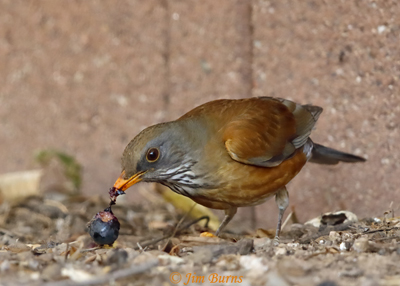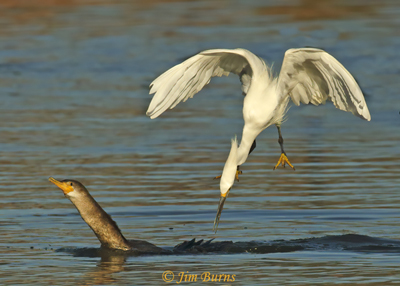
January 13—I glanced out our kitchen window and watched in disbelief as a Rufous-backed Robin ran across our front yard with a fallen Russian Olive in its mouth. Our beautiful, totally mind blowing guest hung out with us, almost daily, until February 21.
March 5—Near a pond at my local patch I watched as a Snowy Egret made an aerial attack on a Double-crested Cormorant swimming in the water with a fish in its mouth, something I had never witnessed before. Egret-1, cormorant-0.
March 21—An accipiter flew past me and landed in a mesquite thirty yards away in perfect light. It proved to be the first Sharp-shinned Hawk I had ever seen/identified at my local patch in forty years of birding there, though I have Cooper’s Hawks there all the time, especially in winter and spring.
July 21—After some searching with help from Pierre Deviche, I was able to find and photograph the adult male Chestnut-sided Warbler reported the day before at Granite Reef R.A. on the Salt River. It was my first sighting of this species in Arizona outside of winter, and I lucked into my first flight shot of this species.
July 22—Speaking of which, we had a Rock Squirrel we’ve named “Sammy” take up residence in our front yard, and on this date a Cooper’s Hawk swept in, drank in our front fountain, then sat in the Olive tree for half an hour preening. Sammy came out of his hole and watched from a perch just a few feet below the raptor. The hawk appeared uninterested and left without incident, but we were worried for Sammy the whole time.
August 8-- Indigo Bunting is not an easy species to find in Arizona, but near the trailhead to West Fork in Oak Creek Canyon, I came across a small group, perhaps a family of the year, catching grasshoppers. This sighting proved more exciting than the odonates for which I had come.
August 21—In the mountains north of Flagstaff I found and photographed three juvenile Townsend’s Solitaires coming to drink at a waterhole. It had been years since my last such sighting, and yes, they have spotted underparts just like other young thrushes.
September 14—Hiking along South Fork in the Chiricahuas, I flushed a Louisiana Waterthrush from the creek bed. It reminded me of our early years in Arizona when I recorded three Louisianas before I got my first Northern Waterthrush for the state.
October 25—Something didn’t seem quite right about the bird skulking under a bush at my local patch. I waited it out and was shocked to see an American Robin pop out, the first of that species I had seem there after all those years of observations, giving credence to the old adage that, sooner or later, every bird will be seen at every location.
November 3—On the far side of one of the ponds at Gilbert Water Ranch I saw a Great Egret emerge from the grass with an Arizona Cotton Rat wriggling in its beak, reminding me once again that all birds are opportunistic predators in some way, this not an old adage, but a fact.
It seems fitting to sum up my birding year, 2021, paraphrasing the final paragraph with which I summed up 2020—“Even without bird travel in a year of pandemic low points, 2021 provided several birding high points, unanticipated, unimagined, coincidental, very lucky high points. This is why we bird. This is why the wonder of the avian world never ends. This is why we look forward to 2022,” and possibly even some bird travel again.